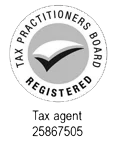Tapping into the R&D Tax Incentive
“If at first the idea is not absurd, then there will be no hope for it” – Albert Einstein
A great quote to set the tone for this blog on the Research & Development (R&D) tax incentive.
With the rapid pace of change in technology today, many businesses ranging from small to large are constantly looking to innovate. Businesses that don’t innovate will eventually fall behind and struggle to stay competitive.
To encourage ongoing research and development in the Australian economy, the government introduced the R&D tax incentive in July 2011.
The aims of the R&D tax incentive are to:
- Boost competitiveness and improve productivity across the Australian economy
- Encourage various industries to conduct R&D that may not otherwise have been conducted
- Provide businesses with more predictable and less complex support
- Improve the incentive for smaller businesses to engage in R&D.
If your business has been conducting R&D activities then it is definitely worthwhile examining its eligibility to access the R&D tax incentive.
What is the R&D tax incentive?
The R&D tax incentive is a tax benefit that if accessed, it will allow your business to recoup between
40% to 45% of its expenditure on R&D activities.
The incentive is delivered as either a cash refund (i.e. your business will receive a cash payment from the tax office) or as a tax offset (i.e. your business’s tax liability will be reduced).
The way in which your business will receive the incentive will depend on its sales turnover, if it has carried forward losses and if it is in a tax paying position.
For the purposes of determining how a business will receive the tax incentive there are two categories that a business may fall into:
Category 1: Turnover less than $20 million
Under this category your business may be eligible to claim a 45% offset against its tax liability.
If your business is not in a tax paying position (e.g. it’s in losses) or it has only used part of the offset (i.e. there is an excess left over after reducing your business’ tax liability to nil), then it will be entitled to receive a cash refund for either the total amount or the residual balance.
Category 2: Turnover greater than $20 million
Under this category your business may be eligible to claim a 40% offset
Additionally under this category the offset is not refundable and this means that any part of the offset that has not been utilised may be carried forward to a future year provided that it has satisfied the tax offset carry-forward rules.
What is R&D for the purposes of the R&D tax incentive?
For the purposes of the R&D tax incentive, R&D activities are defined as activities which are experimental in nature and that are conducted for the purpose of generating new knowledge.

Is my business eligible?
For your business to be eligible for the R&D tax incentive it must be:
- A company incorporated in Australia or a company incorporated overseas that is an Australian resident for tax purposes.
- A for profit entity that is subject to tax in Australia.
- The business must also incur at least $20,000 (AUD) in eligible R&D expenditure during the financial year that it intends to claim the offset in.
- What expenditure can be included in the R&D tax incentive calculation?
- Salaries of staff involved in R&D projects (e.g. engineers, programmers)
- Fees paid to consultants and contractors involved in R&D projects
- Software licenses
- Direct material costs
- Overheads that were incurred in relation to R&D activities (e.g. rent, light and power, property rates and taxes, cleaning and insurance)
- Depreciation on assets used for R&D activities
What expenditure is excluded from the R&D tax incentive calculation?
Some of the common expenses that are specifically excluded from the R&D tax offset calculation are:
- Interest
- Advertising
- Audit fees
- Bad debts
- Tender costs
- Market research
This list is not exhaustive and there are other specific exclusions which may apply to certain expenditure.
How do I register and claim the R&D tax incentive?
The R&D tax incentive is claimed through a company’s tax return and to be able to make a claim your company must firstly register for the incentive with AusIndustry (i.e. the government body which oversees R&D tax incentive registrations). The application for a registration can be completed online through the Australian Government portal at:
A new registration must be completed for each financial year that you wish to claim the incentive in (i.e. there is no automatic renewal of your registration) and furthermore your business must submit its registration application within 10 months following the completion of the financial year.
E.g. If you want to claim the incentive in the 2015 income year end then you must register by 30 April 2016.
Summing up
If your business undertakes R&D projects you might want to consider conducting a more thorough analysis to determine its eligibility.
Determining your business’s eligibility is not a simple task and although you could attempt to draw conclusions by yourself (i.e. the R&D tax incentive operates on a self assessment basis) it would be more beneficial to seek assistance from a tax advisor or R&D tax incentive specialist in order to minimise your ATO audit risk and provide more certainty.
At The Tax Desk we work closely with R&D tax incentive specialists so if you would like to review your company’s eligibility feel free to contact us and we will put you in touch with the right people.
The best way to contact us is:
Mobile: 0447 215 717
Email: service@taxdesk.com.au
Alternatively you can also schedule a consultation with us by clicking on the schedule a free consultation button above.









No Comments